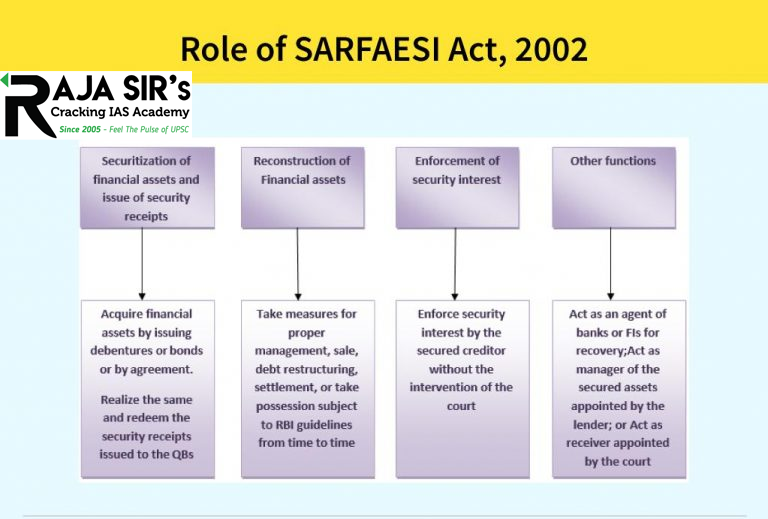- Home
- Prelims
- Mains
- Current Affairs
- Study Materials
- Test Series
 EDITORIALS & ARTICLES
EDITORIALS & ARTICLES
Sarfaesi Act
Banks have invoked the Securitisation and Reconstruction of Financial Assets and Enforcement of Security Interest (Sarfaesi) Act against telecom infrastructure provider GTL to recover their pending dues.
The recovery action has been initiated by IDBI Bank on behalf of lenders, whose total exposure to GTL stood at Rs 7,250 crore as of 31 December 2021, a report in The Financial Express said.

What is the Sarfaesi Act?
The Sarfaesi Act of 2002 was brought in to guard financial institutions against loan defaulters. To recover their bad debts, the banks under this law can take control of securities pledged against the loan, manage or sell them to recover dues without court intervention. The law is applicable throughout the country and covers all assets, movable or immovable, promised as security to the lender.
Why was such a law needed?
Before the law was enacted in December 2002, banks and other financial institutions were forced to take a lengthy route to recover their bad debts. The lenders would appeal in civil courts or designated tribunals to get hold of ‘security interests’ to recovery of defaulting loans, which in turn made the recovery slow and added to the growing list of lender’s non-performing assets.
What powers do banks have under the law?
The Act comes into play if a borrower defaults on his or her payments for more than six months. The lender then can send a notice to the borrower to clear the dues within 60 days. In case that doesn’t happen, the financial institution has the right to take possession of the secured assets and sell, transfer or manage them.
The defaulter, meanwhile, has recourse to move an appellate authority set up under the law within 30 days of receiving a notice from the lender. According to a 2020 Supreme Court judgment, co-operative banks can also invoke Sarfaesi Act. According to the Finance Ministry, the non-banking financial companies (NBFCs) can initiate recovery in Rs 20 lakh loan default cases.









 Latest News
Latest News General Studies
General Studies